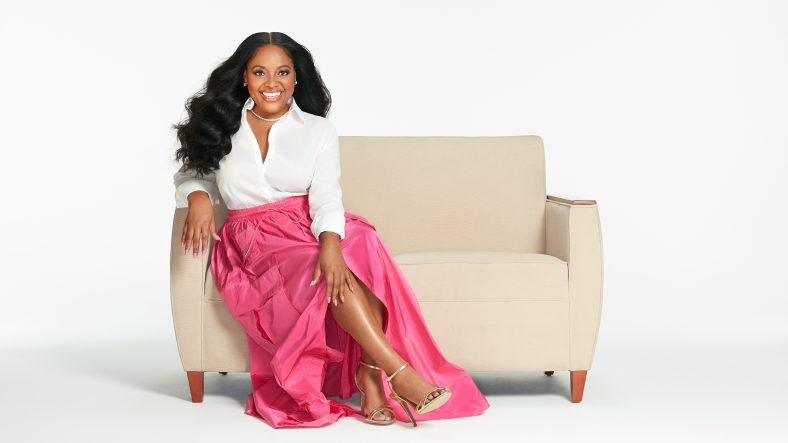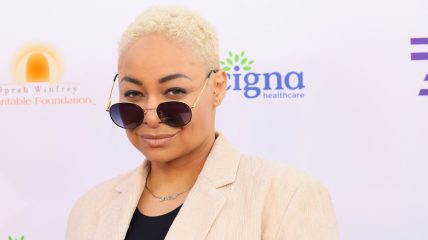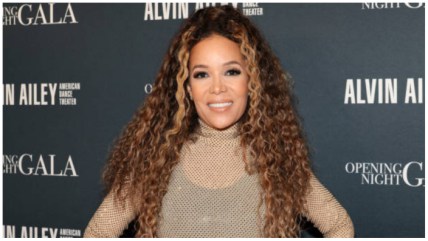More than a cosmetic choice: Everything you need to know about breast reduction surgery
Shedding light on the benefits and downsides, Sherri Shepherd candidly revealed her recent breast reduction surgery.
During the premiere of the new season of her talk show, “Sherri,” comedic host Sherri Shepherd reflected on her summer and gave a shocking update about her boobs.

“Something really big happened to me over the summer, and I promised that I would reveal it today. I’ve been holding onto this secret … So, guess what? I got my boobs done!” Shepherd told the live audience. “I had a breast reduction over the summer, and [in] Season Two, everything is going to be bigger except these boobs!”
Shepherd joins the many Black women who have undergone this procedure. Dr. Aisha Baron, a board-certified plastic and reconstructive surgeon and owner of Breast Body Beauty Plastic and Reconstructive Surgery, explained that in her experience, Black women are more likely to have breast reductions compared to their white and Latina counterparts.
“Black women tend to have a propensity to have larger breasts than the general population,” Baron said. “And so, you’ll see in most practices, the majority of women getting breast reductions are Black women.”
A study conducted by the American Society of Plastic Surgery found that Black and Hispanic patients and patients with private insurance were more likely to undergo breast reduction surgery to treat the overgrowth of breast tissue.
“Everybody in my family has big boobs. I was born with bigger boobs. I came out the womb with big boobs. Y’all, I think the doctor said I was 7 pounds, 20 ounces, and a 34 C,” Shepherd joked. “But my family, we carry around our boobs proudly, wrapped around our arms, thrown over our shoulders. But it was a bit bittersweet because I love my old ‘girls,’ my best friends, I call them. This was a relationship with the boobs.”
Though Shepherd noted an attachment to her 42DD chest, she, like many of the women who seek breast reductions with Baron, was experiencing physical pain caused by the extra weight on her chest.
“I thought I was carrying around the weight of the world when it was really the weight of my boobs,” Shepherd told her audience. “They were so heavy […] It started to become really, really painful.”
“By the time a patient comes and sees me for breast reduction consultation, most of the time, they’ve been living for years with back pain, neck pain, shoulder pain,” Baron explained. “[Patients] get shoulder grooves from their bra straps digging into their shoulders. They’re unable to go into a regular store and find a bra that fits them. They have to order specialty bras, which oftentimes can be very expensive. [Even] then, they still may not have the appropriate size. A lot of times, it’s difficult as well for them to exercise, just because of the weight and the motion of their breasts when they’re trying to run, jog or just try to be very active. And so they’ve dealt for years with these symptoms.”
The symptoms can be so bad and so uncomfortable that breast reductions can be covered by insurance. Though coverage is dependent on the insurance type and specific criteria, Baron shares that it can be considered medically necessary for patients to have breast reduction surgery.
While she encourages all patients to look into their insurance provider’s policy – as there is a possibility of it not being covered – here are some of the general requirements that Baron has noted based on her experience:
- Patients must be below a certain body mass index (BMI), which measures the amount of fat in the body based on height and weight.
- They have to be willing to go down at least two cup sizes. “If you’re going the insurance route for a breast reduction, then [companies] actually have this table [which is] based on your BMI body surface area [which dictates] how much the surgeons have to remove in order for [the procedure] to be covered,” she told theGrio.
“For the most part, you know, there are a lot of hoops that patients have to jump through with trying to get approved through insurance. So a lot of my patients end up just self-paying,” Baron added. “A lot of times, patients will have insurance anyway, and it will end up coming out less to self-pay for these procedures, and then you don’t have to worry about being held to whatever standards the insurance has.”
Like many of Baron’s patients, the “Sherri” host was forced to pay for her procedure out of pocket because her insurance company would not cover it. Emphasizing that her breast reduction was not out of vanity but rather a necessity, Shepherd noted that her insurance company “said no” to her — despite seeing all the necessary documentation.
“Insurance companies are still not covering this for women. And the fact they will not cover a procedure for a woman when it is necessary is a shame,” she said, expressing her frustration. “A woman should not [have to] be in pain […] So, y’all insurance people, you need to make women’s health a priority.”
Whether you decide to go the insurance or self-paying route, Baron suggests that all patients consider these factors, in addition to their own physical symptoms, before committing to a breast reduction:
- Scarring and scar management
After a breast reduction, patients are left with what is commonly known as an “anchor scar” around the areola. Just as patients should consider their feelings about having a permanent scar on their breasts, they should also consider their body’s healing habits. According to Baron, patients should think about how their body has healed in the past and whether they are prone to developing thick scars or keloid scars.
“If that’s a thing for that patient, then you really have to think about scar management and postoperative care because if you have [keloid scars or very thick raised scars] all over your breasts, that can be something that’s equally distressing afterward,” she contended. “So, those patients who have a propensity to scar a little bit more aggressively, [will require] a bit more aggressive scar management initially […] to help to reduce the scar burden.”
- Altered nipple sensation
Baron notes that 5% of patients experience permanent numbness of the nipple and areola after any type of breast surgery.
For her, the range of patients coming in for breast reduction consultation is diverse in not only age but also gender. Similar to women, she explains, men can experience gynecomastia, where there is an overgrowth of the breast gland, which can be caused by hormonal influences, puberty and sometimes marijuana use.
“Outside of [the previously stated causes], there are some people who were overweight, or they lost weight, and they just want to get rid of [what people call] the man boobs,” said the plastic surgeon. “So a male breast reduction is something performed very frequently, [but] most of the time, insurance will not cover it.”
Regardless of age, gender or race, Baron explains that most patients describe feeling like a weight was lifted off of their shoulders — literally.
“I feel better. I can sit up straight. I feel lighter. It’s easier to shop,” said Shepherd, listing some of the benefits she’s experienced post-reduction. “I love the new girls.”

Haniyah Philogene is a multimedia storyteller and Lifestyle reporter covering all things culture. With a passion for digital media, she goes above and beyond to find new ways to tell and share stories.
TheGrio is FREE on your TV via Apple TV, Amazon Fire, Roku, and Android TV. TheGrio’s Black Podcast Network is free too. Download theGrio mobile apps today! Listen to ‘Writing Black‘ with Maiysha Kai.


